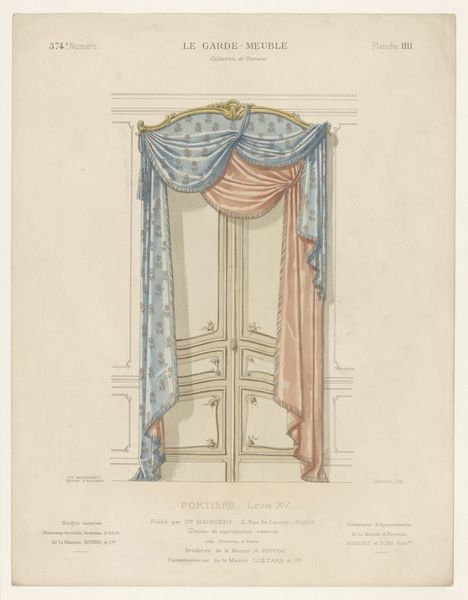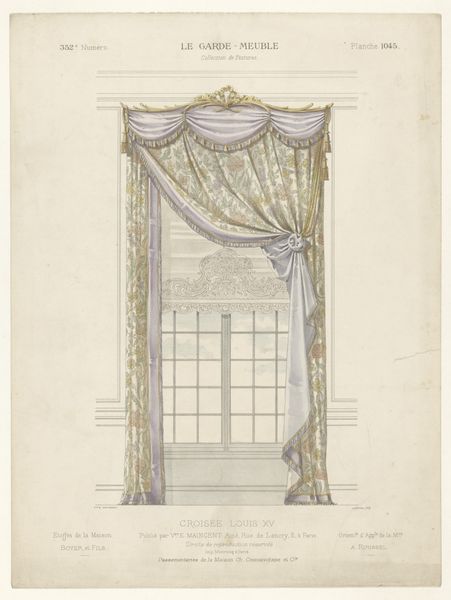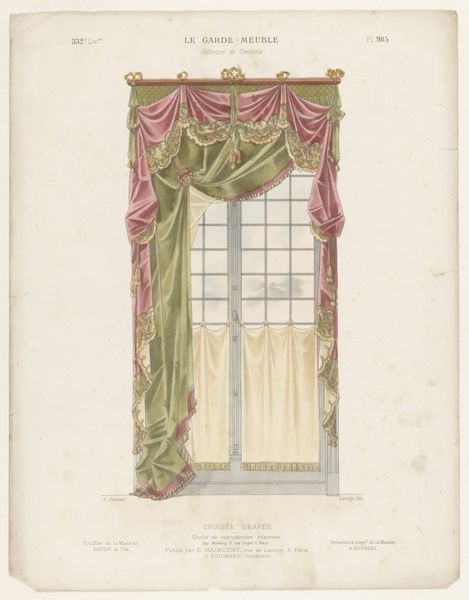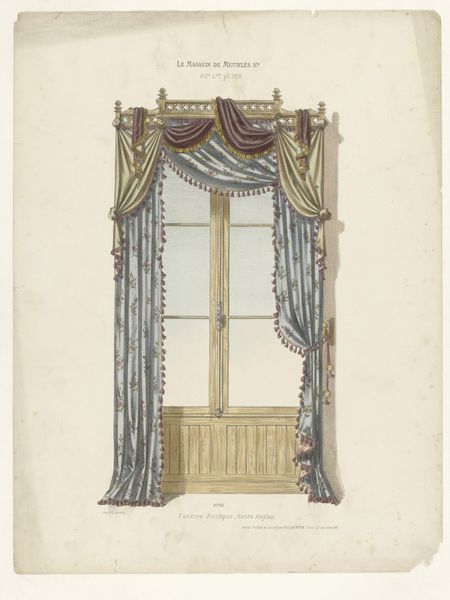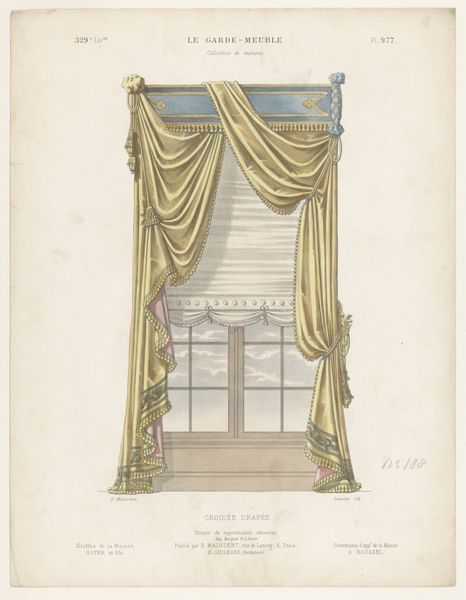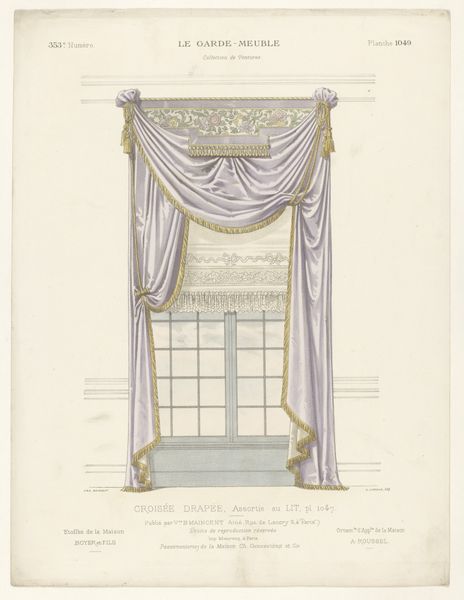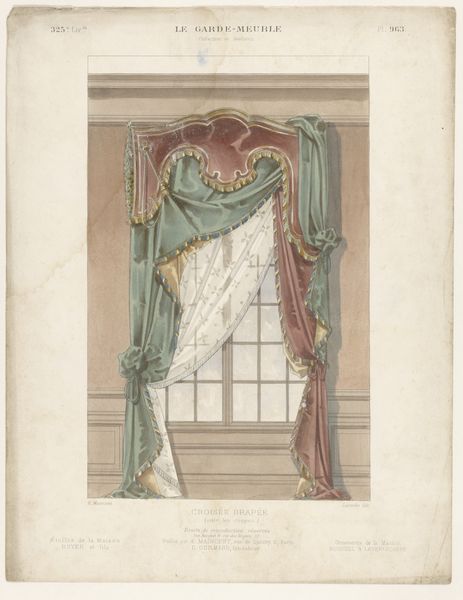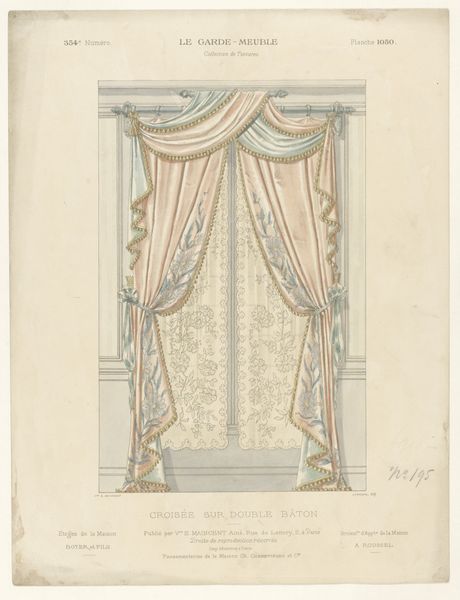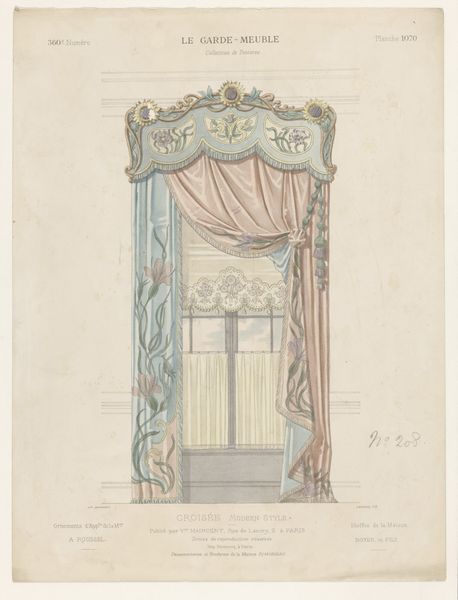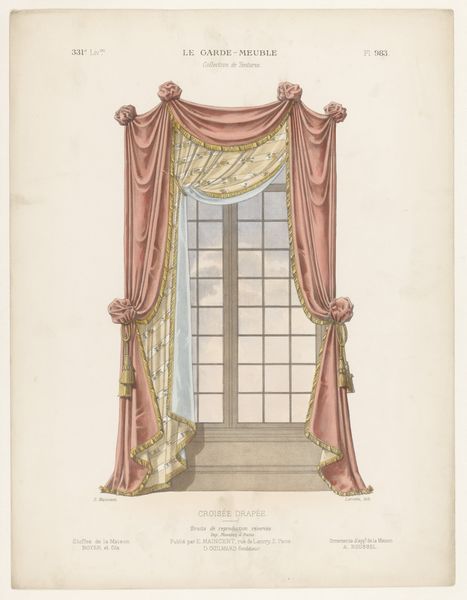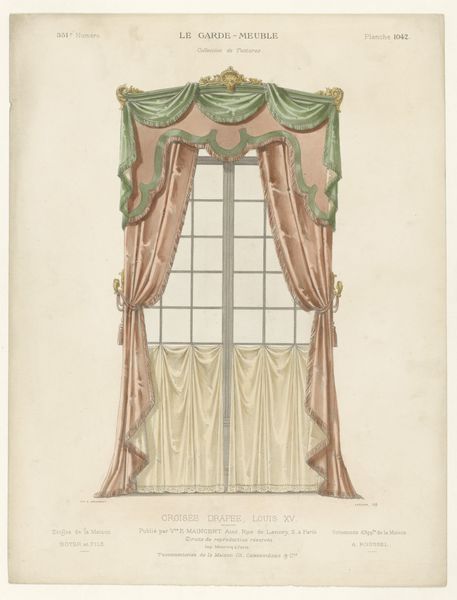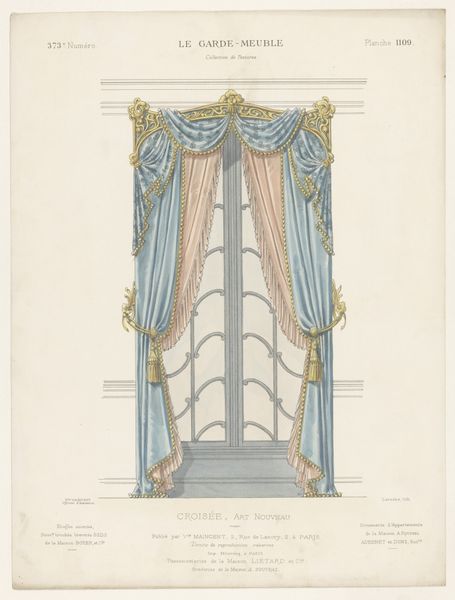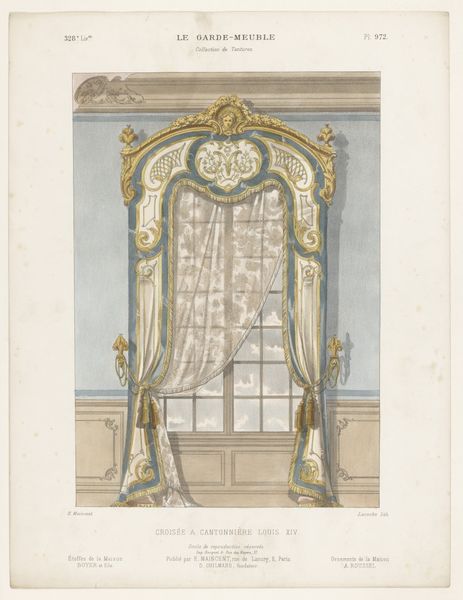
drawing, print
#
drawing
#
art-nouveau
# print
#
decorative-art
Dimensions: height 360 mm, width 273 mm
Copyright: Rijks Museum: Open Domain
Curator: Here, we're looking at a print called "Venster met gordijnen," or "Window with Curtains" attributed to Léon Laroche, dating roughly from 1895 to 1910. Editor: It's lovely! The colors, a muted pink and a faded blue, evoke a feeling of quiet domesticity, like a room awaiting a visitor. Curator: Indeed, the print appears to be a design study. It presents more than just a decorative element; it portrays aspirational taste, fitting the decorative arts movement with Art Nouveau influences that catered to wealthy elites defining themselves as "modern." Editor: I see that. It seems so specifically tailored, not just curtains, but a total concept. I'm intrigued by the emphasis on the theatrical draping—suggesting a sense of drama carefully considered within the private sphere. Are there gendered connotations to these kinds of interior designs, then? Curator: Certainly. In the late 19th century, interior design, and especially textile selection, was viewed as within the purview of women, marking the home as a carefully curated performance of femininity. The choice of materials, their texture, how light interacted with them—all were imbued with coded meanings about the inhabitants. Editor: It's fascinating to think of these curtains as almost a character themselves! They represent control over one's private stage, crafting intimacy for only some eyes and creating expectations, and shaping an overall visual environment. I wonder about access to these interior spaces. What socioeconomic implications did it have for the domestic staff whose labor maintained these constructed ideals? Curator: Absolutely! A window is always both a literal portal and a representational symbol for one's place within the world. But with such heavy window dressings and drapes, what are we obscuring as well as displaying? Editor: Right! We must reflect critically about how design, which is sometimes viewed as superficial or feminine, reflects powerful economic and political realities for multiple genders, and within diverse socioeconomic classes and hierarchies.
Comments
No comments
Be the first to comment and join the conversation on the ultimate creative platform.
